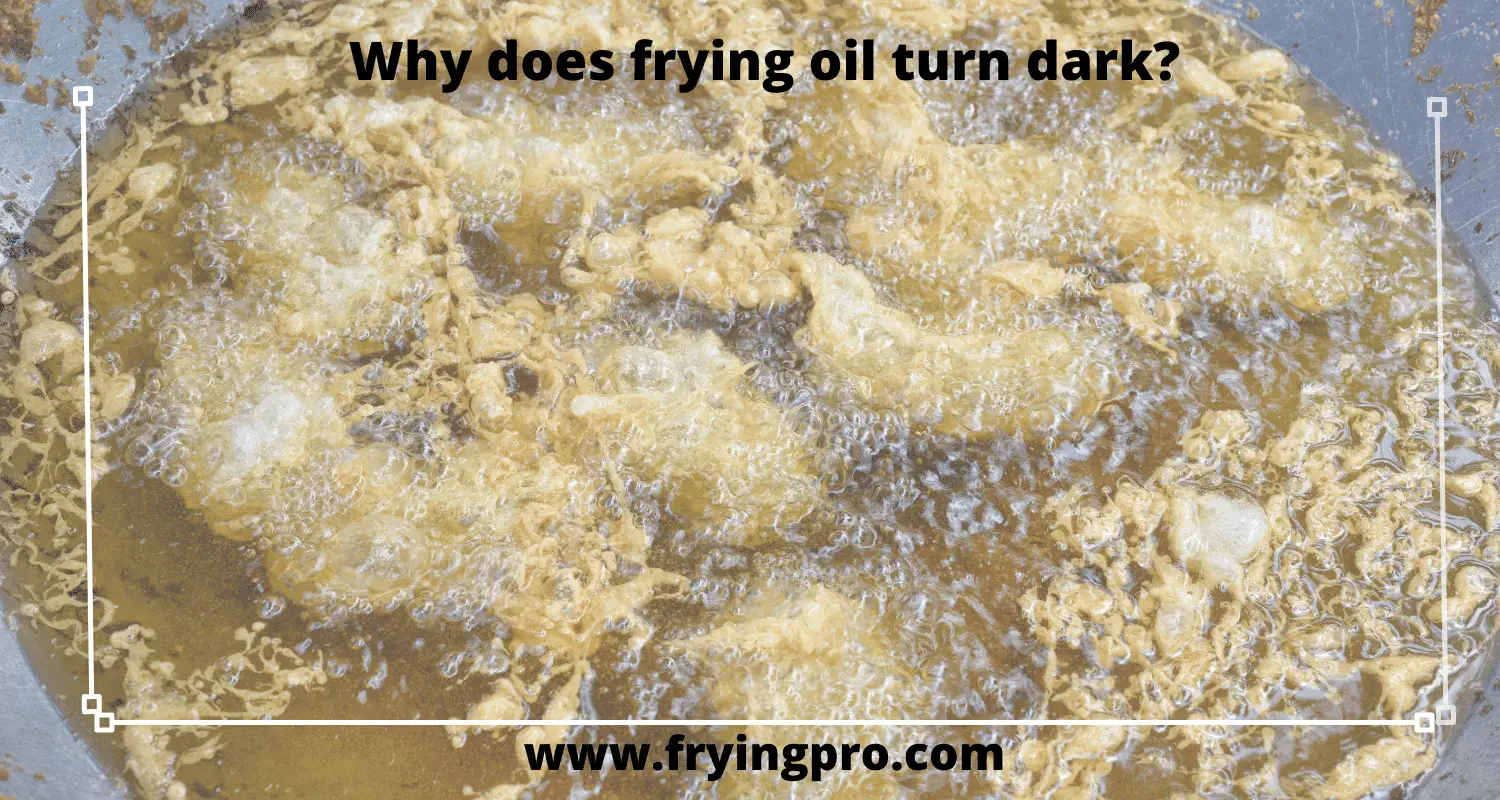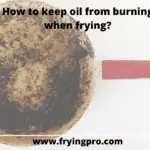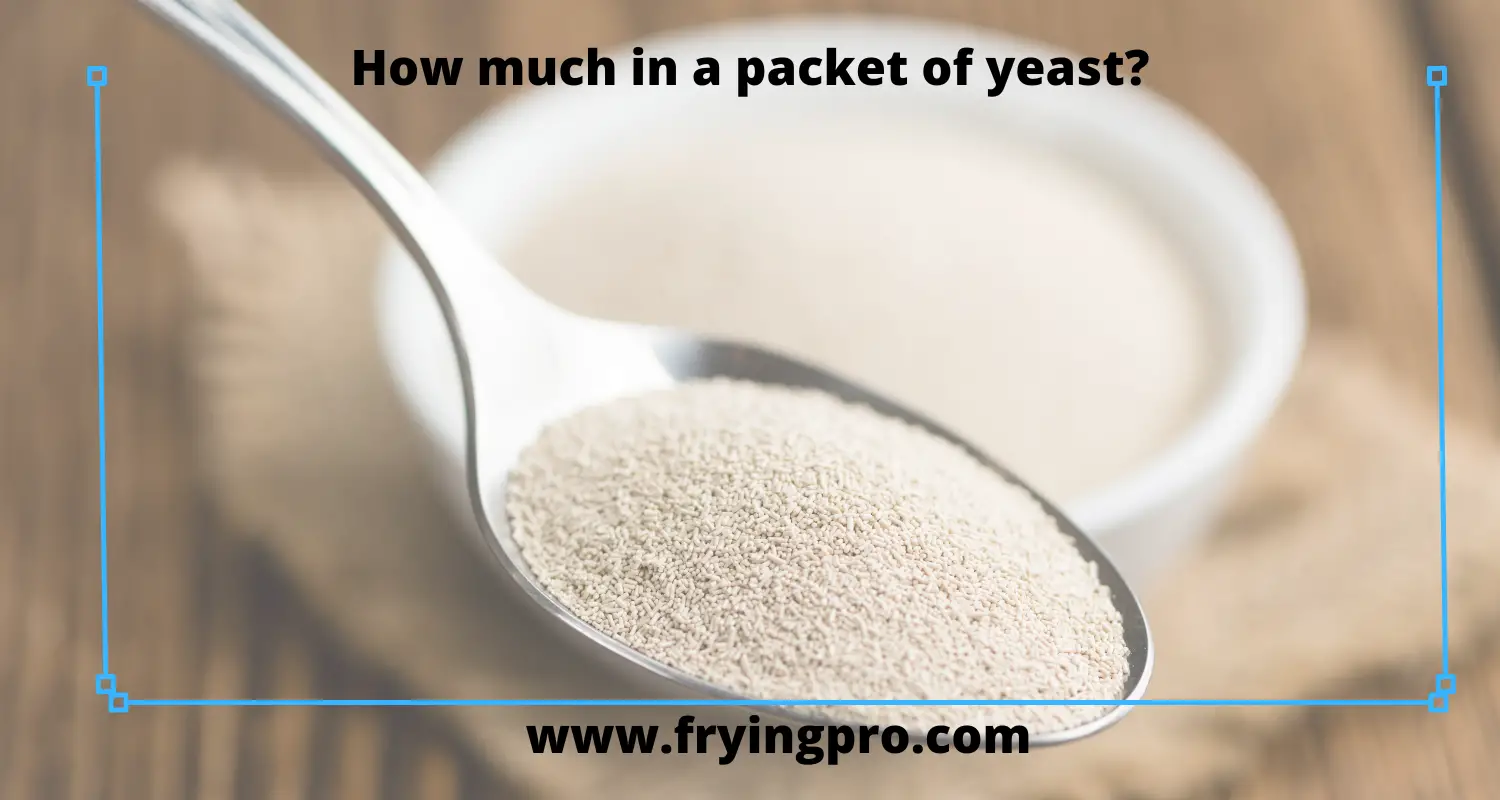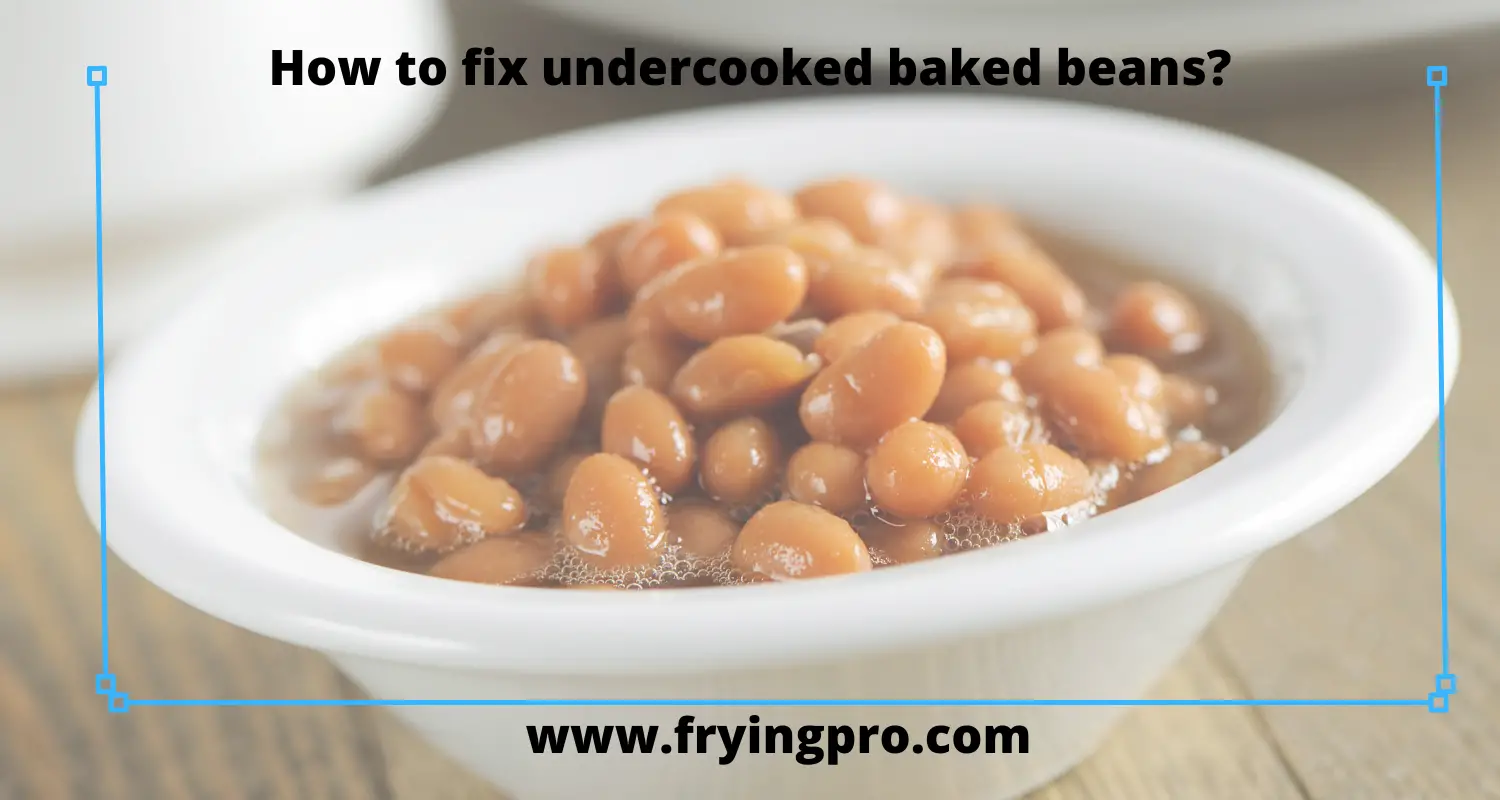Table of Contents
- Why does frying oil turn dark?
- What chemical reactions during frying darken oil?
- How do water, temperature, carbon, and salt affect the darkening of frying oil color?
- Is it okay to cook with dark oil?
- How do you know when frying oil is bad?
- How do you clean black cooking oil?
- What kind of cooking oils turn dark in color during frying?
- Does the type of frying pan affect the darkening of the frying oil color?
- Which food items, when fried, turn oil dark in color?
- Conclusion
If you’re one of those who regularly fry food items, you might have noticed that the frying oil sometimes turns dark in color. So, why does frying oil turn dark? What kind of chemical or physical changes cause the discoloration of oil? And is this harmful for you?
This blog post covers all these questions for you and brings research-based answers to you.
Why does frying oil turn dark?
Frying oil turns dark due to 3 reasons. First, the frying temperature exceeds the oil smoke point (2250F- 500oF), which causes oil discoloration. Second, some frying oils have high levels of free fatty acids (>2%). Such oils degenerate during frying and turn dark in color. Third, the presence of salts speeds up the discoloration of oils.
| Types of oil | Smoke point (oF) | Free fatty acid | Discolor Risk |
| Canola Oil | 225 | 0.04-0.06 | High |
| Peanut oil | 320 | 0.01-0.02 | Moderate |
| Olive oil(light) | 470 | 0.008 | Little |
When you fry something in oil, the fat in the oil begins to break down. This causes a brownish color known as a smoke point. Once the smoke point of an oil is reached, it starts turning rancid or dark as it starts producing free radicals.
You can understand this better by understanding some introductory chemistry. Smoke points can vary depending on the oil used and its characteristics, such as density and melting point.
Some oils like Sunflower Oil have a high smoking point, while others like Sesame Oil have a low smoking point. The higher the smoking point of an oil, the more stable it tends to be and thus less prone to turn rancid or dark in color.
Oils with a high smoking point are commonly used for high-temperature fryings, such as deep frying and pan frying, because they do not oxidize quickly at these temperatures.
That explains why most restaurants use peanut oil for frying their chicken wings instead of vegetable oils such as canola or olive oil, which tend to turn rancid quickly at high temperatures.
What chemical reactions during frying darken oil?
The chemical reactions during frying result from the oxidation of polyunsaturated fats, the most abundant fat in oils. The oxidation of polyunsaturated fats is the first step in turning oils dark. Oxidation produces oxygen atoms.
These oxygen atoms react with the oil molecule, causing the hydrogen atoms to break away, forming a hydroperoxide. The hydroperoxide breaks down into hydrogen peroxide and diester.
The combination of heat and acidity causes the diester to break down into acetic acid and acetyl peroxide. Acetyl peroxide breaks down into acetate and hydrogen peroxide with a bit of water.
The presence of very stable peroxides causes darkening. The amount of darkening is related to how long the oil is fried and how high the temperature is.

How do water, temperature, carbon, and salt affect the darkening of frying oil color?
Smoke point is influenced by the amount of water, temperature, and carbon in the oil.
High-temperature frying requires oil that has a high smoking point. Thus, oils with low carbon content or high smoking points are often suggested.
The extreme heat of deep frying turns fat molecules into chemically active radicals that produce free radicals. This process causes the darkening of the smoke point and a dark color similar to that of used cooking oil.
The oxidation rate may also depend on how much salt is present in the oil. Salt increases oil water-holding capacity, which encourages oxidation due to increased moisture levels.
Consequently, salts can increase the browning rate but decrease the oil stability at higher temperatures.
Is it okay to cook with dark oil?
Yes, it is okay to cook with dark oil. However, you need to check for a warning label on the oil bottle because some oils have warnings about high temperatures that may cause the oil to form toxic fumes when cooked at a high temperature.
You would also want to keep an eye on how much oil you are using as it will tend to absorb more oxygen and thus become more unstable as time goes by.
Most oils with a low smoke point can be used for deep or pan frying but not baking because they are less stable than oils with a high smoking point.
How do you know when frying oil is bad?
Since the smoke point of an oil is specific to that type of oil, it is impossible to tell by sight when oil is terrible or rancid.
You will only be able to detect this by smelling the oil. If you smell a burnt smell, your oil has likely turned rancid, and you should stop using it immediately.
The best way to detect if frying oil has turned rancid is by using a litmus paper test.
How do you clean black cooking oil?
The oil that has turned black can be cleaned with a water-based cleaner. The oil is primarily solid and can be easily removed from surfaces. You can also add a little bleach or vinegar to the mixture to help remove any stains that have become hard to remove.
What kind of cooking oils turn dark in color during frying?
The smoke point of the cooking oil used for frying can vary. Some oils burn at a lower temperature than others.
For example, when you fry food in sunflower oil, the food will reach a higher temperature before the sesame oil does, and it will start to turn dark in color. This is because sunflower oil has a low smoking point and high density, making it more prone to heat damage.
Both oils are commonly used for deep frying, but they may produce different colors of smoke due to the difference in their smoke points.
Does the type of frying pan affect the darkening of the frying oil color?
There are two types of frying pans: one-piece and multi-piece. The one-piece pan has a round cooking surface, whereas the multi-piece pan has several surfaces on the bottom, which you can use when you want to stir or flip certain ingredients.
A typical one-piece fry pan is made from cast iron, while a typical multi-piece fry pan is made from stainless steel.
Cast iron is preferred for frying pans because it conducts heat well and releases it evenly. It also provides good heat retention, which means that your oil will not turn rancid quickly at high temperatures, such as when frying chicken wings.
Stainless steel, however, conducts heat poorly and overheats quickly. This means that your oil will turn rancid faster despite having a higher smoking point than cast iron pans because if it overheats, it becomes oxidized and turns dark in color.
Which food items, when fried, turn oil dark in color?
Deep-fried doughnuts and French fries are the most common fried food items that turn oil dark in color.
Conclusion
So, why does frying oil turn dark? It is simply because of some chemical reactions occurring in the oil during the frying process. In most cases, it is safe to use dark-colored oils. However, just to be careful, use fresh and clean frying oil.







